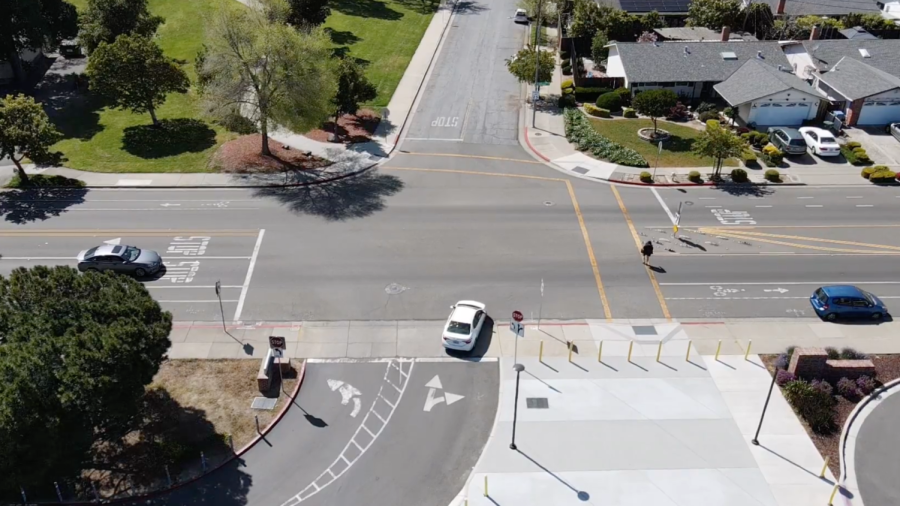City to improve Lynbrook pedestrain safety
Bulb-outs, our sidewalk extensions, will be installed at the intersection of Donington Drive and Johnson Avenue just outside the Lynbrook main entrance.
May 8, 2023
To improve pedestrian safety and reduce traffic speed, the City of San Jose is proactively taking measures to add bulb-outs, or curb extensions, to the sidewalks at the intersection of Donington Drive and Johnson Avenue between Lynbrook and Rainbow Park. Through the work of San Jose Vice Mayor Rosemary Kamei’s office and the Department of Transportation, the city also plans to create a safety plan for all public and private schools in San Jose.
“Lynbrook is an area where we have gotten community concerns about traffic and how fast the cars are going,” San Jose Vice Mayor Rosemary Kamei said.
The T-intersection of Donington and Johnson experiences heavy traffic during peak hours of student drop-off and pick-up times, rendering it a hazardous area for bikers and pedestrians. These bulb-outs will narrow the road to force drivers to slow down, increasing pedestrian safety by offering a buffer area from cars. Bulb-outs are just one of the many features that the city has implemented in the community to ensure pedestrian safety.
“I think the addition of bulb-outs will be helpful to students who walk to school because it will provide more room on the sidewalk, which will make it safer for us,” junior Cyrus Wong said.
To establish safer speed limits for pedestrians and bikers, DOT has employed a dedicated consultant to update engineering and conduct traffic surveys to reevaluate what should be the appropriate speed limits around school campuses. The city sources its data by sending out surveys to school principals, which allows them to identify specific issues related to each school and understand the needs and concerns surrounding its facilities.
“We’re locating areas around schools to see if there have been incidents with pedestrian crashes or if cars are driving faster than speed limits,” Kamei said.
Lynbrook is in an area which has received particularly numerous community concerns about the speed of traffic. A report of a student that was hit by a car during the 2021-22 school year was also a spark for the city to take the safety of student pedestrians more seriously. Due to this incident, DOT has planned to lower the speed limit near Lynbrook’s main entrance on Johnson Avenue to 30 mph, but are awaiting the outcome of the study to make a final decision.
“Slowing down the speed limit will help to a degree, but people should be driving closer to a 25 mph limit any time they are close to schools that are in session,” Lynbrook crossing guard Tim Wehner said. “It might help community members, both elderly folks and younger children, who may cross further up Johnson towards Bollinger, which is great.”
In addition to the new safety measures the city is taking, Wehner suggests that drivers and pedestrians know the rules of the road as well as practice patience when the rush is on. Earbuds and phones are an unnecessary distraction for the 90 seconds or so it may take to cross any busy intersection.
“The risk-reward between a tardy and someone being severely injured is not worth taking,” Wehner said. “Parents can consider leaving the house earlier, and perhaps dropping off their student a few blocks away from the school, which could alleviate congestion.”
In June, DOT is expected to finish developing a school safety work plan with data from public and private schools.



























































